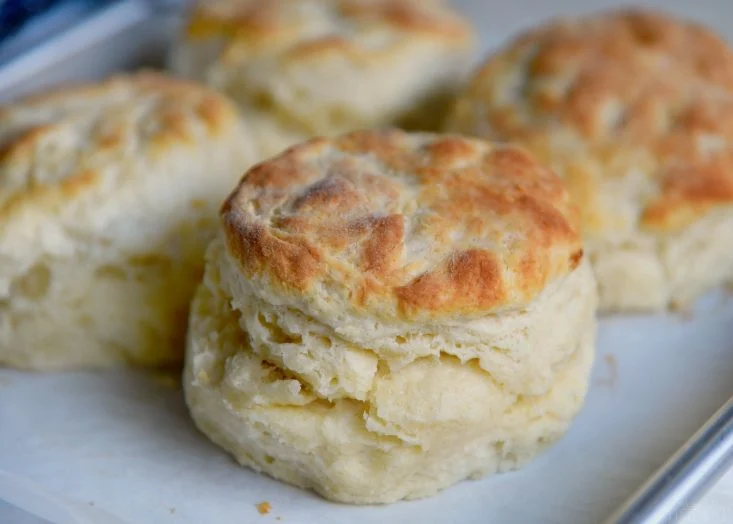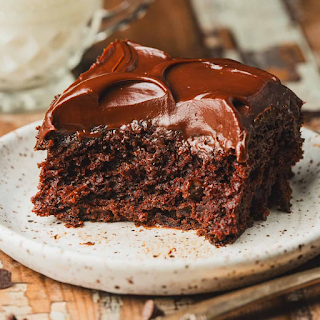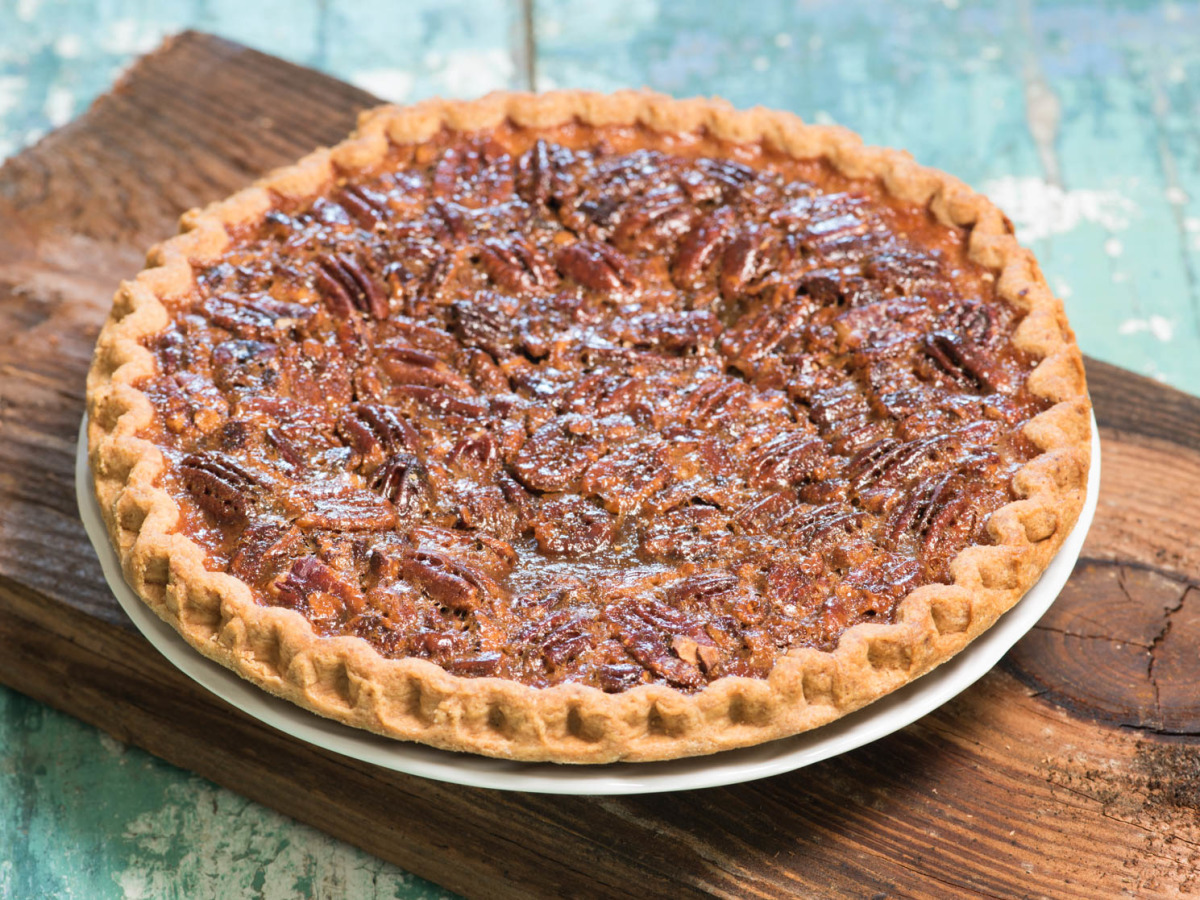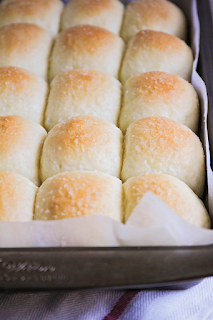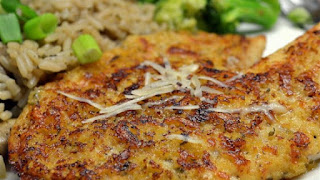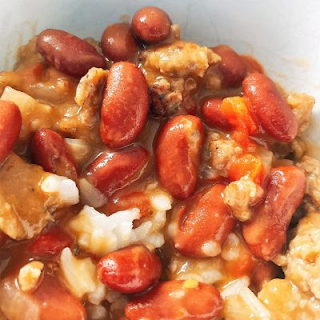In recent blogs, I've covered "College Cooking," featuring recipes requiring minimal experience, skills, equipment, and ingredients; and "Bread Baking for Beginners," featuring recipes for breads and rolls that are relatively simple to make and fairly foolproof. But there's a lot more to baking besides yeast breads! So today's entry is all kinds of baked goods, a dozen of my favorites from muffins to cookies to sweet bread to cake. These recipes require a little more precision and technique that either of the previous entries, but with a little care and confidence, these are all manageable for even an inexperienced baker.
These recipes generally call for more ingredients and supplies than the recipes in the previous entries, but here are my recommendations for items to keep stocked if you plan to bake on a regular basis.
Pantry Items
- flour (all-purpose)
- granulated sugar (when the recipe just says "sugar," it means granulated)
- powdered sugar (also called confectioner's sugar)
- brown sugar (brown sugar is moist, so when measuring it, be sure to pack it down with the back of a spoon for accuracy)
- baking powder
- baking soda
- salt
- vanilla extract
- cinnamon
- molasses
- Dutch cocoa (unsweetened cocoa powder)
- chocolate chips
- butter
- milk
- eggs
- large wooden or plastic cutting board
- mixing bowls (large, medium, and small)
- electric mixer
- large spoon (wooden or silicone)
- rubber spatula (for scraping the bowl)
- metal spatula (for removing cookies from the baking sheet)
- wire whisk
- baking sheets (sheets with raised rims have multiple uses for both baking and cooking)
- parchment paper
- plastic wrap
- non-stick cooking spray
- sifter or mesh strainer with handle
- 9x13-inch baking dish
- 8x8- or 9x9-inch square and/or 8- or 9-inch round cake pans
- pie plate
- muffin tins (metal or silicone)
- loaf pans (metal or glass)
- measuring cups (4-, 2-, and 1-cup)
- measuring spoons
- wire cooling racks
- cookie cutters
- rolling pin
- cookie tins or Tupperware storage boxes
3 tablespoons sugar
1/2 teaspoon salt
4 teaspoons baking powder
1/2 teaspoon cream of tartar
3/4 cup (1-1/2 sticks) cold butter, cut into slices
1 egg
1 cup milk
melted butter, optional
*Tip: When combining flour with small amounts of other dry ingredients, measure the flour into a large measuring cup, then dump the remaining dry ingredients on top and blend in the cup using a wire whisk.
Preheat oven to 450 degrees. In a large mixing bowl, combine all ingredients except egg and milk. Using a pastry blender or a pair of table knives used like scissor blades (helpful tutorial here!), cut the butter into the flour mixture until the bits of flour are the size of small peas. Add milk and egg and stir just until combined. Don't overwork the dough! Turn the dough out onto a floured board and knead 10-15 times, sprinkling with flour if needed. Pat the dough out to a 3/4- to 1-inch thickness with your fingers, and cut into circles using a biscuit cutter, round cookie cutter, or a thin-rimmed glass or acrylic drinking glass, dipping into flour periodically to avoid sticking. Line a baking sheet with parchment paper or spray with non-stick spray and bake for 10-15 minutes, until golden brown on top. If desired, brush with melted butter while still warm.
1/2 cup sugar
1 egg
1/2 cup milk
1 teaspoon vanilla extract
1-1/2 cups flour
1-1/2 teaspoons baking powder
3/4 teaspoon cream of tartar
1/4 teaspoon salt
1/2 teaspoon cinnamon
For topping:
1/3 cup sugar
1 teaspoon cinnamon
2 tablespoons butter, melted
Preheat oven to 350 degrees and spray a muffin tin with non-stick spray. In a medium bowl, beat butter and sugar with an electric mixer until fluffy. Add egg, milk, and vanilla and beat until combined. Whisk together remaining ingredients and gradually beat into egg mixture, just until combined. Pour batter into muffin tins, filling each cup about 3/4 full. Bake for 14 to 16 minutes. While muffins are baking, combine topping sugar and cinnamon in a small bowl. When muffins finish baking, tip them out of the tin and dip the tops in the melted butter and then the topping mixture. Serve warm.
Raspberry Almond Shortbread Cookies
1 cup (2 sticks) butter, softened2/3 cup sugar
1/2 teaspoon almond extract (can use vanilla instead)
2 cups plus 2 tablespoons flour (255g, if you have a kitchen scale)
1/2 cup seedless red raspberry jam
For the glaze:
1 cup powdered sugar
3 to 4 teaspoons water
1 teaspoon almond (or vanilla) extract
In a medium bowl, beat butter with an electric mixer for about 30 seconds, the scrape down sides of bowl with a rubber spatula. Add the sugar and almond extract and beat for about 30 seconds or just until combined. On low speed, beat in the flour a little at a time, scraping the sides as necessary until dough is formed. Using a spatula, stir in any remaining flour that may be in the bottom of the mixing bowl, but do not overwork the dough. Working quickly, scoop spoonfuls of dough and form 1-inch balls. (If the dough starts to get warm, chill it in the fridge for a few minutes.) Arrange the dough balls 2 inches apart on a baking sheet lined with parchment paper, and use your knuckle to make an indentation in the top of each. Chill in the refrigerator for at least an hour before baking. (You can move them to a paper plate to save space and return them to the baking sheets when ready to bake.) If you refrigerate them for longer than an hour, cover with plastic wrap to avoid drying out. [Note: If you do not chill the dough, the cookies will flatten out and become crispy or burnt on the edges during baking.]
When ready to bake, preheat oven to 350 degrees. Spoon about 1/4 teaspoon of jam into the indentation of each cookie and bake for 11-13 minutes, until edges are a very light brown. Allow to cool on the baking sheet for 5 minutes, then transfer to a wire rack to cool completely. While cookies are cooling, prepare the glaze: In a small bowl, combine the confectioner's sugar [Note: sifting the confectioner's sugar will keep the glaze smooth] with one teaspoon of water and the almond extract, whisking with a wire whisk or a fork. Add enough additional water to get a "drizzling" consistency. Once cookies are completely cooled, use a fork to drizzle glaze over the cookies. [Tip: Drizzle the cookies while on the cooling rack, and line the counter under the rack with paper towels or parchment paper for easier cleanup.] Allow the glaze to completely set before moving cookies.
[Note: As a fun variation of these cookies, you can replace the almond extract with vanilla extract and use jellied cranberry sauce in place of the raspberry jam.]
4 eggs
1 cup milk
1 cup flour
dash vanilla
1/2 teaspoon salt
4 tablespoons melted butter, divided ("divided" means part of this ingredient will be added in a separate step)
Optional toppings: fresh berries, maple syrup, powdered sugar
Preheat oven to 450 degrees. Using an electric mixer, beat together all ingredients except 2 tablespoons of the butter (and the toppings), until smooth and free of lumps. Pour remaining butter into in a heavy oven-safe skillet or deep baking dish or pie plate and swirl to coat bottom and sides. Pour batter into prepared dish. Bake for 18 minutes, until deep golden brown and puffed around the edges. Cut into wedges and serve warm with maple syrup, powdered sugar, and/or berries.
Grandma Martha’s Gingerbread
½ cup butter, softened
2/3 cup sugar
2 eggs
2/3 cup molasses
2 cups flour
¾ teaspoon salt
2 teaspoons baking powder
¼ teaspoon baking soda
1 teaspoon ginger
¾ teaspoon cinnamon
1/8 teaspoon cloves
¾ cup boiling water
Preheat oven to 350 degrees. Using electric mixer on medium-high, cream together butter and sugar. Add eggs one at a time. Gradually add molasses, beating constantly. Sift together dry ingredients and blend into wet mixture at low speed. Add boiling water and mix until smooth. Pour into greased & floured* 8” or 9” square pan. Bake for 35-45 minutes, until a toothpick inserted in the center comes out clean. Serve warm, topped with whipped cream or vanilla ice cream.
* Spray pan with non-stick spray or rub with butter, then spoon in a tablespoon or so of flour and shake it around the bottom and sides of the pan, tapping to remove all but a light coating of flour. Discard excess flour.
Fudge Party Cake with Frosting
2 cups sugar
2 cups flour
1 cup butter, softened
1 cup hot water
½ cup Dutch cocoa
2 eggs, slightly beaten
1 teaspoon vanilla extract
1 teaspoon baking soda
½ cup buttermilk (can add 1 tablespoon white vinegar to a scant ½ cup milk)
Preheat oven to 400 degrees. In large mixing bowl, blend together sugar and flour with electric mixer. In a heavy saucepan over medium heat, bring butter, hot water, and cocoa to a full boil. Pour over sugar and flour and beat well. Beat in eggs. Add remaining ingredients, beating between each addition. Pour into greased and floured (see note in previous recipe) 9x13” pan and bake for 20-25 minutes, until toothpick inserted in center comes out clean. Do not overbake.
While cake is baking, make frosting:
6 tablespoons butter
6 tablespoons milk
1-1/2 cup sugar
1 cup semisweet chocolate chips
Combine butter, milk, and sugar in a heavy saucepan over medium heat. Bring to a full boil and boil rapidly for 30-60 seconds. [Note: Frosting will be grainy if it doesn't boil long enough.] Remove from heat and stir in chocolate chips, stirring hard until completely smooth. Pour over warm cake while frosting is still warm - you will not need to use the entire batch of frosting. (The leftovers are great for making graham cracker sandwiches and dipping apple slices.) Sprinkle with colored sprinkles while frosting is still warm, if desired. Cake should be served directly from the pan.
Molasses Cookies
2-1/4 cups flour
2 teaspoons baking soda
2 teaspoons ginger
1-1/2 teaspoons cinnamon
1/2 teaspoon cloves
1/4 teaspoon allspice
1/2 teaspoon salt
3/4 cup butter, softened
1 cup brown sugar
1 egg
1/4 cup molasses
sugar, for rolling
Preheat oven to 375 degrees. Whisk together flour, baking soda, ginger, cinnamon, cloves, allspice, and salt, and set aside. Beat together butter and brown sugar on medium speed, until incorporated (about 30 seconds), then scrape bowl with rubber spatula. Beat on medium-high for 3 minutes, scraping bowl halfway through, until light and fluffy. Add egg and molasses and beat on medium-low until incorporated. Add flour and spice mixture and beat on medium until well-incorporated. Using your hands, roll dough into 1-1/2” diameter balls, then roll in a bowl of sugar to coat. Place on baking sheet, about 2” apart. Bake for 8 minutes. Remove from oven and cool on baking sheet for 5 minutes, then move to cooling racks.
3 cups flour
¾ teaspoon baking powder
¼ teaspoon salt
1 cup butter, softened
1 cup sugar
1 egg, beaten
1 tablespoon milk
Powdered sugar, for rolling
Sift together flour, baking powder, and salt and set aside. Using an electric mixer, cream butter and sugar in large bowl. Add egg and milk and beat to combine. On low speed, gradually add flour and beat until mixture pulls away from the side of the bowl. Divide the dough in half, wrap in waxed paper, and refrigerate for 2 hours.
Preheat oven to 375 degrees. Sprinkle surface where you will roll out dough and rolling pin with powdered sugar. Roll out dough to 1/4-inch thick. (If dough is too stiff or starts to crack, allow to sit at room temperature for several minutes before rolling out.) Move the dough around and check underneath frequently to make sure it is not sticking. Cut into shapes with cookie cutters and place at least 1-inch apart on baking sheet lined with parchment paper or sprayed with non-stick spray. Bake for 7 to 9 minutes or until cookies are just beginning to turn brown around the edges, rotating cookie sheet halfway through baking time. Let sit on baking sheet for 2 minutes then move to wire rack until completely cooled. Serve as is or decorate with royal icing or colored frosting.
[Note: You can also decorate these cookies with colored sugar and sprinkles prior to baking.]
1 (15-oz) can pumpkin
3 cups sugar
1 cup vegetable oil
2/3 cup water
4 eggs
3-1/3 cups flour
2 teaspoons baking soda
1-1/2 teaspoons salt
1 teaspoon cinnamon
1 teaspoon nutmeg
3 cups sugar
2 tablespoons lemon zest
1 cup lemon juice
1 cup flour
powdered sugar, for dusting



